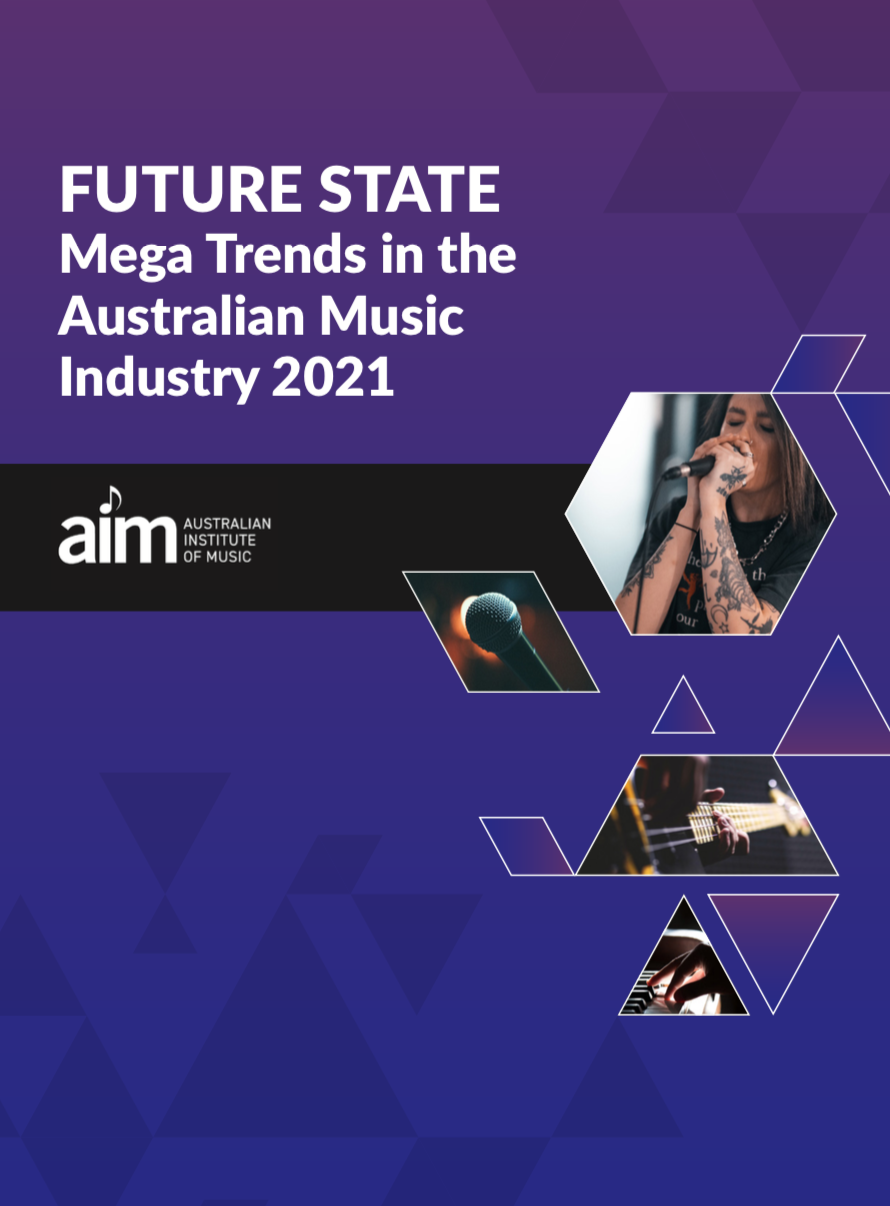AIM report charts course for next generation of global Aussie music entrepreneurs [exclusive]
![AIM report charts course for next generation of global Aussie music entrepreneurs [exclusive]](https://images.thebrag.com/cdn-cgi/image/fit=cover,width=1200,height=800,format=auto/https://images-r2-1.thebrag.com/tmn/uploads/music-industry-trends.png)
A new and free white paper report, Future State: Mega Trends In The Music Industry 2021, provides a blueprint for the next generation of global Aussie music entrepreneurs.
It was compiled by staff of the Australian Institute of Music, a tertiary college based in Sydney and Melbourne with a focus on music and music business.
The age of the artist as entrepreneur has “well and truly arrived”, according to the report.
“While the importance of a great song or a captivating artist will never diminish, today’s successful artists and executives combine natural talent with a sophisticated understanding of new technologies and business models,” it added.
Speaking to TMN, AIM chairman Ed St John said 2021 is going to be a pivot point for the Australian industry.
“There’s something about the sad passing of Chris Murphy and Michael Gudinski and some other imminent departures that signals a certain passing of the baton. Change is inevitable,” he said.
“There’s a new generation of power players who are determined to do things differently.”
The changes forced upon us by the pandemic has also resulted in the proliferation of new tech, a boom in the amount of time consumers and creators spend online, and revenue growth from recorded music, mobile data usage and ad-supported platforms such as TikTok, Shazam and YouTube.
Future State: Mega Trends In The Music Industry 2021 identifies seven mega-trends that will shape music over the next five years and beyond.
Democratisation and the rise of the independent artist allows artists from all corners to place their music before global consumers, and without the need for major label patronage, the report noted.
10% of today’s recorded music market revenue is generated by self-releasing acts, while a growing percentage are moving to indie labels or posting directly on streaming services.
Equitable remuneration is a complex issue still shrouded by smoke and mirrors, but is slowly coming to the attention of governments and regulatory bodies.
Inclusion, accountability and diversity, long shoved under the carpet, are slowly correcting.
Globalisation of the industry, once dominated by the much bigger North American and European markets, has created more markets and genres for Aussies.
Livestreaming, once a shoddy alternative, is now a US$600 million business and growing as a highway to international profiles.
The growth of data means important creative and marketing decisions are more “informed” than based on “instinct”, and fuels greater interaction between acts and fans.
Clearly, the international success of Australian music lies with tech-savvy entrepreneurs. But despite the many positives on hand, it’s going to be a hard battle, the report warned.
“It’s worth noting that Australia represents a relatively small piece of this picture.
“While we’re ranked the 9th largest music market in the world, Australian music sales accounted for just $542 million of that global total – less than 2% of the world market.”
Tim Kelly, program director of AIM’s Bachelor of Arts & Entertainment Management and one-time label exec, explained how growing opportunities in the music industry can be seized.
“The ability to think independently and get to the edge of your art are going to be the things that enable you to stand out in the music industry, whether you’re a musician, or you’re working with musicians in some kind of capacity,” he told TMN.
‘What is mainstream today started off being marginal. When Taylor Swift started, there wasn’t a market for country and western music for teenage girls. Until there was. So we encourage students to think independently.”
TMN readers can download the report, for free, on the AIM website.































